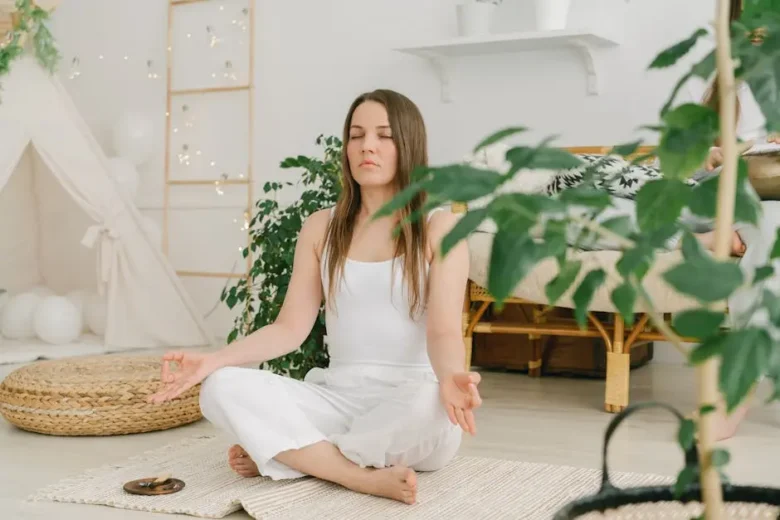To live mindfully, you must learn to slow down and observe the world more closely. You also need to find peace in the moment. It is easy to get lost in the midst of hectic schedules, constant notifications and endless responsibilities. We can forget to appreciate the simple things in life. Mindful living helps us to reconnect with ourselves, reduce stress and bring peace into our lives. Inner peace does not come from the outside. It is something we cultivate within ourselves, and mindfulness can be a powerful tool to do so.
Mindful Living: The Essence of Mindful Living
Mindful living is about paying attention to everything you do, feel, and experience without judgement. This is about being aware of your thoughts, feelings, and environment instead of living life on autopilot. We often go through our daily routines without being fully present. This creates a feeling of disconnection. You can close this gap by practicing mindfulness and engaging with the moment. This awareness helps you find peace in simple experiences and makes them meaningful.
Breathing is the Foundation of mindfulness.
The act of breathing is one the most simple yet powerful mindfulness practices. We breathe every second, but rarely give it any thought. Slowing down and focusing your attention on your breath allows you to create space in between thoughts. Deep, conscious breathing can calm your nervous system, reduce your stress and bring you back to the moment. You can create inner peace by breathing mindfully for a few moments each day.
Mindful Eating to Increase Awareness
Most of the time, eating is a necessity that we must do every day. However, it is often done in a hurry or distracted by conversations or screens. In order to eat mindfully, you must pay attention to the tastes, textures and smells, as well as the nutrition that food provides. Slowing down allows you to enjoy your meal and pay attention to your body’s natural signals of hunger and fullness. This practice is not only good for your health, but it also helps you to be grateful and calm. It turns a simple meal in a ritual.
Mindfulness in Daily Motions
When practiced with mindfulness, movement can be a form or mindfulness. When you are aware of the sensations in your body, and the rhythm of breath, walking, stretching or exercising can become more meaningful. A short walk, for example, can become a meditative moment when you pay attention to the sensations of your body and the rhythm of your breath. Mindful movement helps you reconnect with your body and ground your thoughts. It also provides a natural path to inner peace.
How to Create Stillness in an Active Day
The constant activity, responsibilities and deadlines can make life feel overwhelming. It is important to create intentional moments of calmness throughout the day. This will help you reset your mind and restore equilibrium. Sitting quietly, closing your eyelids, and letting raced thoughts go could be all it takes. These pauses will remind you to not be always in a hurry. Making space for stillness allows your body and mind to relax. This calmness leads to a greater sense of inner peace.
Relationships and Mindful Communication
Mindfulness can make relationships and interactions more meaningful. Mindful communication is about listening to someone without judgement, responding thoughtfully, and being fully present when they speak. You can strengthen bonds by being fully present during conversations. Mindful interactions create harmony and reduce misunderstandings, which allows peace to flow both within you as well as in your relationships.
Technology and Awareness
It is a fact of life that technology has become an indispensable part of our lives. However, it can also be a source for distraction and over-stimulation. Technology mindfully is about setting boundaries, and being deliberate with when and how you use it. You can set specific times to engage in digital activities, rather than constantly checking your phone and scrolling through Facebook without purpose. By taking breaks from your screens, you allow your mind to relax and make room for other meaningful activities. Technology can be used to support a peaceful life when it is used with mindfulness.
Gratitude is a Mindful Practice
Gratitude and mindfulness are closely linked. By taking time to appreciate and notice the simple things in life, such as a kind act, a meal or a moment’s laughter, you can shift your focus away from what you lack to what is already there. Gratitude brings positive emotions, reduces negativity, and creates contentment. Being mindful of what is good in your own life will help you to feel more fulfilled and at peace. This practice builds resilience and helps you find peace in difficult times.
Making Consistent Mindfulness a Habit
Consistency is the key to mindful living. Even a few minutes of mindfulness practice each day can make a difference. It is important to incorporate mindfulness into your daily life until it becomes a habit. Over time, mindfulness won’t feel like a separate task, but will become a part of everything you do, whether it is eating, working, walking or relaxing. Regular practice will help you develop a deeper connection with yourself, calmer mental state, and greater peace of mind.
Conclusion
Simple mindfulness practices can be powerful tools for creating inner peace. You can turn ordinary moments into calm by paying attention to what is happening in the moment, breathing deeply and eating mindfully. Peace is also maintained by mindful communication, a balanced use of technology and stillness. Consistency makes mindfulness work, and after a few years of practice it becomes second nature. You will learn through mindfulness that the peace you seek is not in the world around you, but rather within yourself.
FAQs
1. What is mindful living?
The practice of mindful living involves being fully present in everyday activities. It includes observing thoughts, feelings, and surroundings, without distraction or judgement.
2. How does mindfulness promote inner peace?
Mindfulness helps to calm the mind, reduce stress and focus on the moment. This leads to a greater sense of balance and peace.
3. Do you need to meditate to be mindful?
Mindfulness can be practiced in many ways, including through meditation, but it is also possible to live mindfully by engaging in everyday activities such as eating, walking or breathing consciously.
4. How many minutes per day are required for mindfulness?
Even a few moments of conscious breathing or observation will make a big difference. Consistency is more important than duration.
5. Can mindfulness reduce stress and anxiety?
Mindfulness is a very effective way to manage stress and anxiety. It helps calm racing thoughts, encourages relaxing, and creates a space between emotions and reaction.




